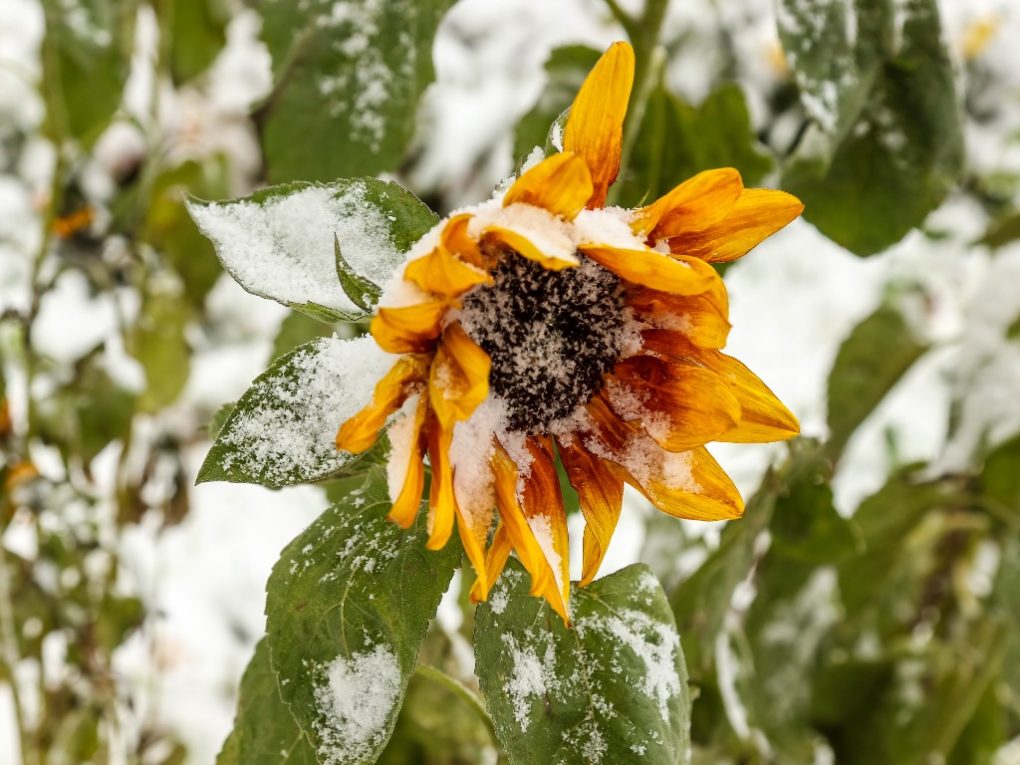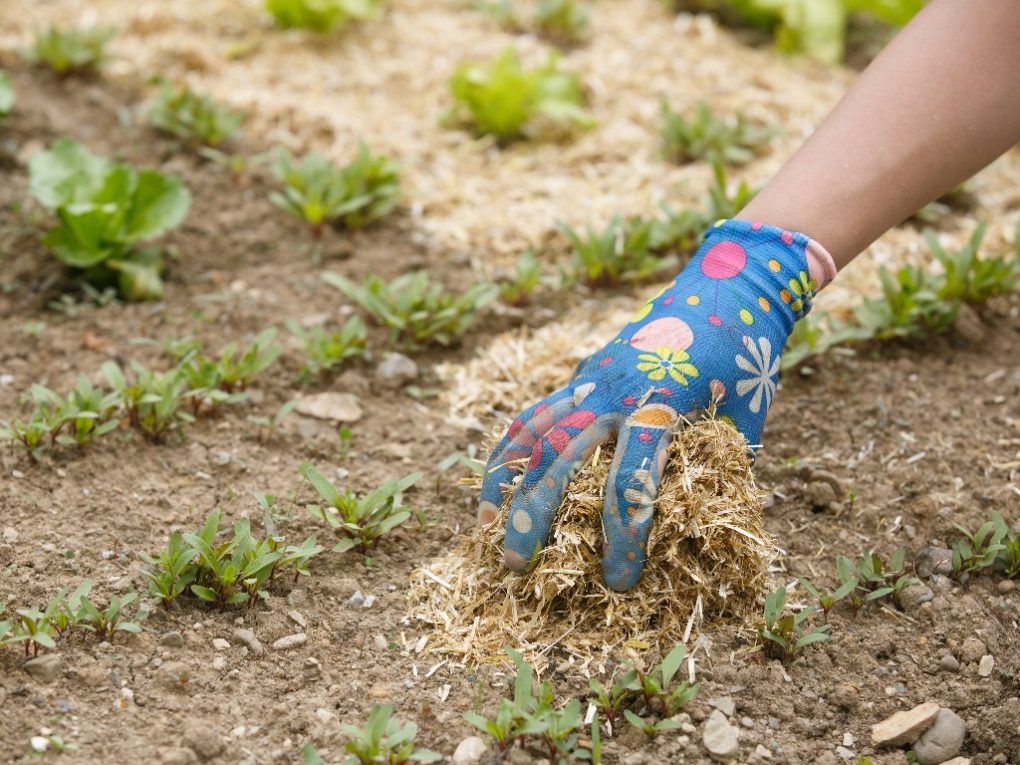Can Sunflower Survive Winter: How to Help a Perennial Sunflower Survive Winter
Yes, some sunflowers can survive the winter. However, the ability of sunflowers to survive the winter largely depends on the specific species of sunflower and the climate in which they are growing. Some sunflower species are annual plants that complete their life cycle in a year and do not survive the winter. Other species are perennials, which means they live for multiple years and can survive the winter.

Perennial sunflowers are often hardy and can survive in colder climates. However, even with their hardiness, they may require some protection during the winter. For example, providing mulch around the plant’s base can help insulate the roots and protect them from freezing.
Additionally, some gardeners may cover the plant with a protective layer, such as a burlap sack or blanket, to protect it from harsh winter winds and frost. It is also important to note that sunflowers prefer warm and sunny weather and may not thrive in areas with extended cold temperatures or limited sunlight.
Therefore, choosing the appropriate sunflower species and providing them with the right growing conditions for your specific climate is important if you want to cultivate them year-round.
Table of Contents
How to Help a Perennial Sunflower Survive Winter
Mulch
Mulch can help a sunflower grow in the winter by providing insulation for the roots and conserving moisture. The soil can freeze and thaw repeatedly in cold winter, damaging the sunflower’s roots.

Applying a layer of mulch around the base of the plant can stabilize the soil temperature, preventing the soil from freezing and thawing as frequently. This helps protect the sunflower’s roots from extreme temperature fluctuations and reduces the risk of damage.
Mulch also helps to conserve moisture by reducing evaporation from the soil. During the winter months, the air tends to be drier, which can cause the soil to dry out more quickly. By covering the soil with mulch, the moisture in the soil can be conserved, helping to keep the soil moist and reducing the need for watering.
In addition, mulch can help to suppress weed growth, which can compete with the sunflower for water and nutrients. This allows the sunflower to use its resources more effectively to grow and thrive.
Pruning

Pruning a sunflower in the winter can help the plant to grow and thrive by redirecting its energy to the roots and promoting new growth in the spring. When you prune a sunflower, you remove the above-ground portions of the plant, including the stems, leaves, and flowers. This reduces the amount of plant material the roots need to support and allows the plant to focus its energy on the root system.
Winter soil is typically too cold for sunflowers to grow above ground. By pruning back the plant’s above-ground parts, you help it conserve energy that it would otherwise use to maintain foliage and flowers that wouldn’t survive through the winter. Instead, the energy can be redirected to the root system, which is the foundation of the plant.
Pruning also promotes new growth in the spring by stimulating the plant to produce fresh shoots and leaves. When you prune the plant, you create a clean slate for new growth. Then, as the temperatures warm up and the sunflower begins to emerge from dormancy, the plant can produce new growth, leading to a healthier and more vigorous plant.
In addition, pruning can help to prevent diseases and pests from overwintering in the plant’s foliage. Removing the plant’s above-ground parts can reduce the risk of pests and diseases surviving through the winter and potentially infecting the plant in the spring.
Watering
Watering a sunflower in the winter can help the plant grow and thrive by providing the necessary moisture to survive the cold months. While sunflowers typically require less water in the winter due to reduced transpiration rates, they still need adequate moisture to maintain healthy root systems.

During the winter months, if the soil becomes too dry, the roots of the sunflower can be damaged or die off, which can impact the plant’s ability to survive and grow in the spring. Watering the plant regularly helps maintain the soil’s moisture content and prevents the roots from drying out.
When watering a sunflower in the winter, it’s important to be mindful of the weather conditions. Overwatering can lead to waterlogging and root rot, harming the plant’s health. It’s best to water deeply and infrequently, allowing the soil to dry out slightly between watering sessions.
It’s also important to water the sunflower during the warmest part of the day to prevent the water from freezing on the plant. Watering during the afternoon when the sun is at its peak can ensure that the water has enough time to be absorbed by the roots before freezing temperatures set in.
Protection From Wind
Protecting a sunflower from the wind in the winter can help the plant to survive and grow by reducing the risk of damage caused by harsh winds and cold temperatures. Wind can be particularly damaging to sunflowers in the winter, as it can cause the plant to lose moisture and become stressed, impacting its ability to survive and grow.
One of the primary ways to protect a sunflower from the wind is to create a windbreak. A windbreak is a barrier around the plant to shield it from the wind. This can be achieved using various materials, such as burlap, fabric, or plastic. The windbreak should be tall enough to protect the plant from the strongest winds but not so tall that it blocks the sun.
Another way to protect a sunflower from the wind is to stake it. Staking involves securing the plant to a stake or trellis to keep it upright and stable. This can help prevent the plant from bending or breaking due to strong winds, which can particularly damage the plant’s stem and root system.
Sunlight
Sunlight is essential for the survival and growth of a sunflower, even in the winter. Although the days are shorter and the sun is lower in the sky during winter, sunflowers still require sunlight to maintain their metabolic processes and prepare for spring growth.

Sunlight is vital for photosynthesis, which is how plants convert light energy into chemical energy to fuel their growth and development. During the winter, the amount of sunlight available is reduced, slowing photosynthesis and reducing the plant’s energy production. However, sunflowers are hardy plants that can still survive and thrive in low-light conditions.
One way to help a sunflower receive more sunlight in the winter is to ensure it is planted in a location that receives as much direct sunlight as possible. This means choosing a spot not obstructed by buildings, trees, or other objects that can block the sun’s rays.
Another way to help a sunflower receive more sunlight in the winter is to keep the plant as healthy and vigorous as possible. This means providing the plant with nutrients, water, and protection from the elements. A healthy plant is better equipped to withstand winter stresses and can continue to photosynthesize more consistently.
